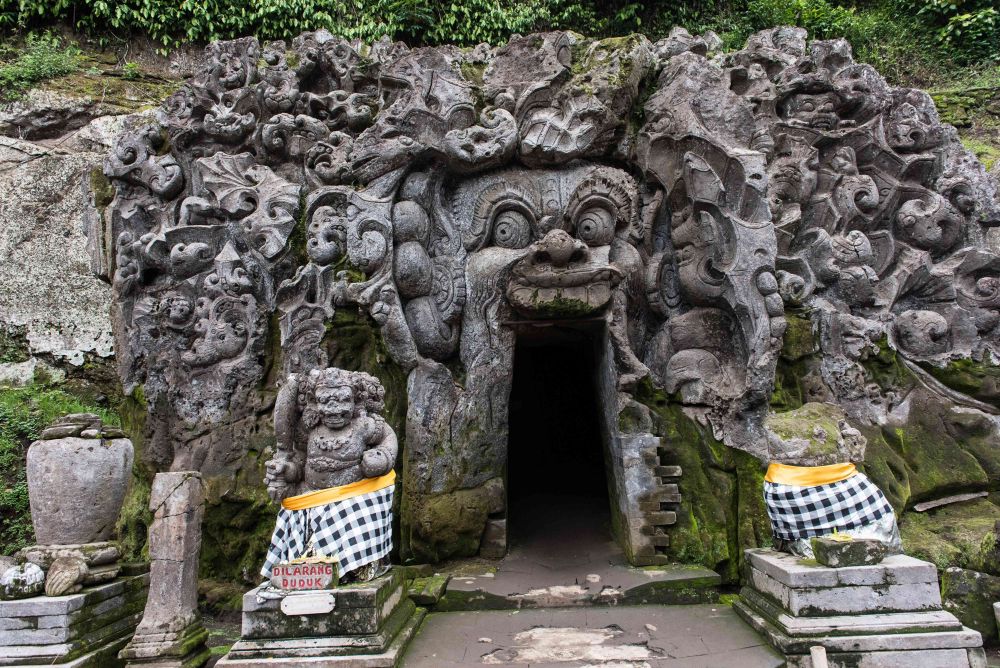

Goa Gajah, or the Elephant Cave, is located on the island of Bali, Indonesia. It is an archaeological site of significant historical value and a popular tourist destination that dates back to the 9th century. The complex is thought to have been used as a sanctuary and is recognized for its intricately carved entrance depicting various menacing creatures and demons. Its name, 'Elephant Cave', is somewhat misleading as it has no association with elephants; rather, the name could have been derived from the close proximity to the Elephant River or the stone figure inside which resembles the Hindu god Ganesh, who has an elephant's head.
Historically, Goa Gajah served as a spiritual place for meditation. The exact origins of the cave are uncertain, but it's believed to have been built as a place for spiritual meditation and rituals. Over the years it became a site of pilgrimage for Hindu and Buddhist devotees.
The site became a focal point for tourism in Bali after the Dutch rediscovered it in the early 20th century and performed restorative work. Since then, it has become an essential stop for cultural tourism in Bali. In 1995, UNESCO listed the site and its surrounding area on the tentative list of World Heritage sites, recognizing its cultural significance and boosting its profile internationally.
In recent years, tourism trends at Goa Gajah have shifted towards a more sustainable and culturally sensitive approach. Visitors are encouraged to respect the sacred nature of the site and to approach it with the appropriate cultural sensitivity. Tour operators and guides are now more often providing detailed historical context to visitors, enhancing their understanding and appreciation of the site.
With its blend of historical significance, spiritual importance, and natural beauty, Goa Gajah will continue to be a cornerstone of Bali's tourism industry. Educational tourism, where tourists aim to learn more about the history and culture of the places they visit, is particularly relevant at Goa Gajah. Additionally, it contributes significantly to the local economy by providing jobs and supporting small businesses that cater to tourists.
Looking to the future, the site's management is likely to focus on conservation efforts and managing tourist numbers to preserve its integrity. With the ever-growing interest in authentic and responsible travel, Goa Gajah is set to maintain its status as a treasured historical destination.